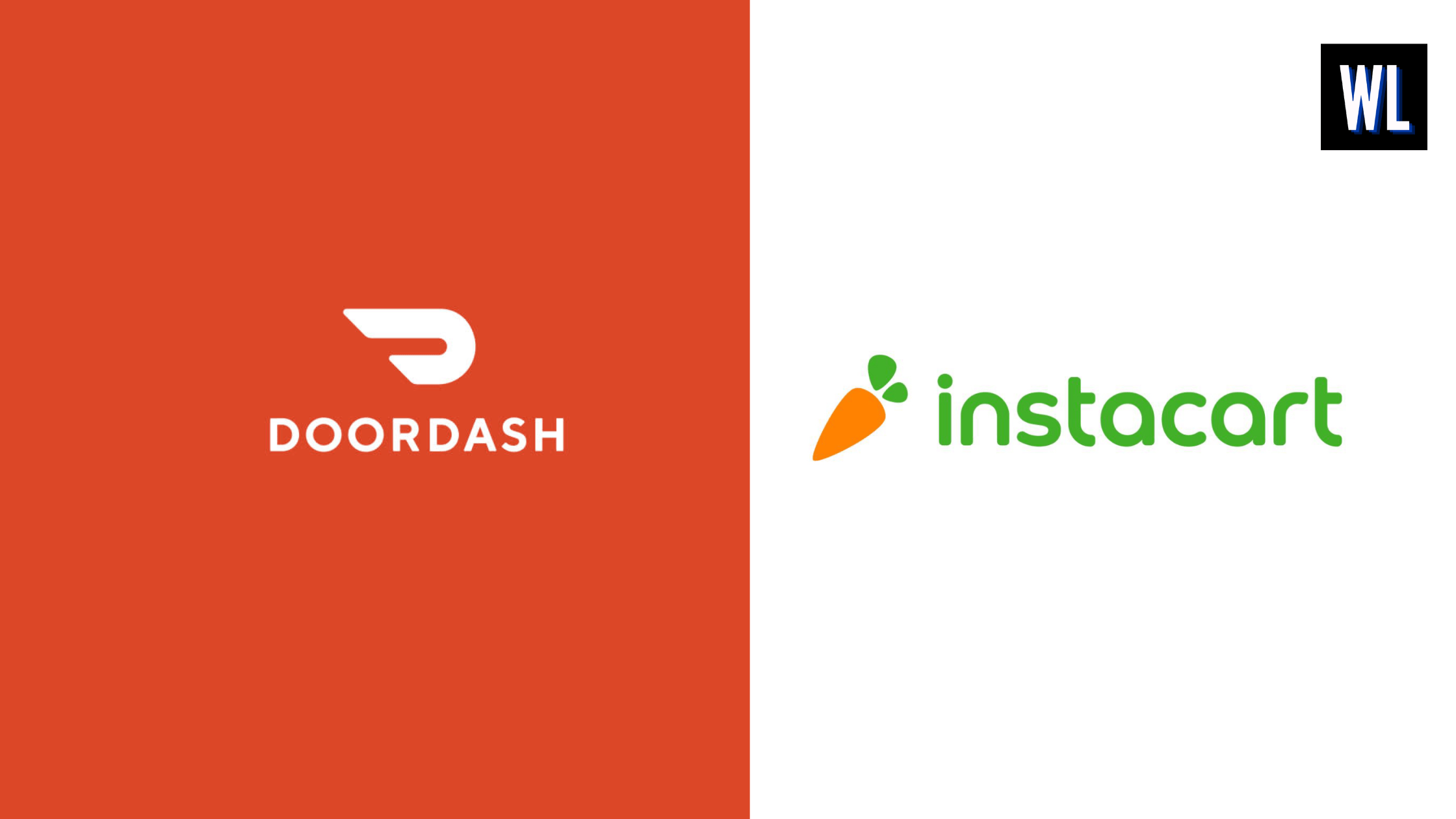With the rise of gig economy platforms, many people are turning to side hustles like Instacart and DoorDash to boost their income. But which one makes more money? Both platforms offer flexible schedules and the opportunity to earn based on effort, but the potential income depends on factors like location, order volume, tips, and your ability to optimise delivery efficiency.
In this article, we’ll dive into the earning potential of Instacart and DoorDash, compare their key features, and provide tips for maximising your income on both platforms. By the end, you’ll have a clearer idea of which one might be the better fit for your financial goals.
How Instacart Works
Instacart is a grocery delivery service that allows shoppers to earn money by picking and delivering groceries to customers. The platform operates in two roles:
- Full-Service Shopper: Independent contractors who shop for and deliver groceries.
- In-Store Shopper: Part-time employees who shop for groceries within a store but don’t handle deliveries.
How Instacart Shoppers Earn Money
- Base Pay: Instacart provides a base pay for each batch (group of orders), typically ranging from $7 to $20.
- Tips: Customers can add tips, which significantly boost earnings. Some shoppers report that tips make up 50% or more of their total income.
- Bonuses: Occasionally, Instacart offers bonuses for completing a certain number of batches within a specific time frame.
Average Earnings
- According to reports, Instacart full-service shoppers earn an average of $15-$20 per hour. High-demand areas or peak times can push earnings to $25-$30 per hour.
- In-store shoppers earn a fixed hourly wage, usually between $12-$16 per hour.
How DoorDash Works
DoorDash is a food delivery platform where Dashers pick up meals from restaurants and deliver them to customers. Dashers are independent contractors who can work flexible hours.
How DoorDash Drivers Earn Money
- Base Pay: DoorDash provides a base pay for each delivery, typically between $2-$10.
- Tips: Customers can add tips, which are fully passed on to Dashers.
- Promotions: DoorDash offers Peak Pay (higher base pay during busy hours) and Challenges (bonuses for completing a certain number of deliveries).
Average Earnings
- Dashers typically earn $15-$25 per hour, depending on location and time of day. Some report higher earnings during peak times or in areas with strong demand.
Comparing Earnings: Instacart vs. DoorDash
When deciding which platform can make you more money, it’s essential to compare key factors like pay structure, potential tips, and time efficiency.
1. Base Pay
- Instacart: Base pay per batch is generally higher than DoorDash’s per-delivery base pay. However, batches often include multiple orders, which can take more time.
- DoorDash: Base pay is lower but consistent, with shorter delivery times.
2. Tips
- Instacart: Tips are a significant portion of earnings, especially for large grocery orders.
- DoorDash: Tips are common but typically smaller, as restaurant orders are usually less expensive than grocery orders.
3. Earning Per Hour
- Both platforms report average earnings of $15-$25 per hour. However, earnings depend on factors like demand, location, and efficiency.
4. Expenses
- Instacart: Requires more driving and potential parking challenges, increasing fuel and vehicle wear-and-tear costs.
- DoorDash: Shorter trips mean lower expenses, but frequent stops can still add up.
5. Order Frequency
- Instacart: Orders may take longer to complete due to shopping and delivery time, resulting in fewer orders per hour.
- DoorDash: Faster delivery times mean Dashers can handle more orders per hour, potentially boosting earnings.
Factors That Influence Earnings on Instacart and DoorDash
1. Location
- High-demand urban areas typically offer more orders and higher tips on both platforms.
- Suburban or rural areas may have fewer orders but less competition among drivers.
2. Time of Day
- Instacart: Grocery delivery is busiest during late mornings and afternoons.
- DoorDash: Dinner hours (5 PM-9 PM) and weekends see the highest demand.
3. Order Size and Complexity
- Instacart: Larger grocery orders take more time but usually result in higher tips.
- DoorDash: Quick restaurant deliveries mean less time per order but smaller tips.
4. Promotions and Bonuses
- Both platforms offer incentives, but these vary widely by region and time.
5. Personal Efficiency
- Optimising your route and managing your time effectively can significantly impact your hourly earnings.
Tips for Maximising Your Earnings
For Instacart Shoppers:
- Choose Batches Wisely: Look for batches with higher pay and shorter delivery distances.
- Optimize Your Route: Use navigation apps to minimize driving time.
- Work During Peak Hours: Shop during weekends and evenings when demand is highest.
- Communicate with Customers: Providing excellent service can lead to higher tips and repeat customers.
For DoorDash Drivers:
- Focus on Hotspots: Stick to areas with high restaurant density.
- Stack Orders: Accept multiple deliveries going in the same direction.
- Take Advantage of Peak Pay: Plan your shifts during promotions.
- Be Selective: Decline low-paying orders to focus on more profitable ones.
Pros and Cons of Instacart and DoorDash
Instacart
Pros:
- Higher earning potential per order.
- Generous tips for large grocery orders.
- Flexible schedule.
Cons:
- Longer time commitment per order.
- Higher expenses for fuel and vehicle maintenance.
- Limited opportunities in low-demand areas.
DoorDash
Pros:
- Shorter delivery times.
- Consistent order volume in busy areas.
- Lower operating expenses compared to Instacart.
Cons:
- Lower tips on smaller orders.
- Earnings can fluctuate based on demand.
Frequently Asked Questions (FAQs)
Yes, many gig workers use both platforms to maximise their earnings. Switching between platforms allows you to fill downtime and take advantage of peak demand on each.
Both platforms offer flexibility, but DoorDash’s shorter delivery times might make it more suitable for those with limited availability.
Tips tend to be higher on Instacart due to larger order values, but DoorDash offers more frequent tipping opportunities with smaller orders.
Startup costs are minimal for both. You’ll need a reliable vehicle, smartphone, and insulated bags for deliveries. Instacart shoppers may also need a credit card for purchasing groceries.
Fuel, vehicle maintenance, and taxes can significantly impact your earnings on both platforms. It’s essential to track these expenses.
Both platforms offer in-app support, but experiences vary. Some drivers and shoppers report quicker responses from DoorDash.
To Conclude- Which Platform Makes More Money?
The answer to “What makes more money: Instacart or DoorDash?” depends largely on your location, schedule, and preferences. If you prefer fewer but higher-paying orders and don’t mind longer delivery times, Instacart might be the better fit. On the other hand, if you value quick deliveries and a steady stream of smaller orders, DoorDash could be more lucrative.
To maximise your earnings, consider working for both platforms and capitalise on their strengths. Experiment with different strategies, track your expenses, and focus on customer satisfaction to boost tips. With the right approach, both Instacart and DoorDash can become profitable side hustles—or even full-time gigs—that fit your lifestyle.
For more in-depth tips and resources to enhance your gig economy journey, subscribe to our website today! We provide expert advice and actionable insights to help you thrive in flexible work opportunities.




